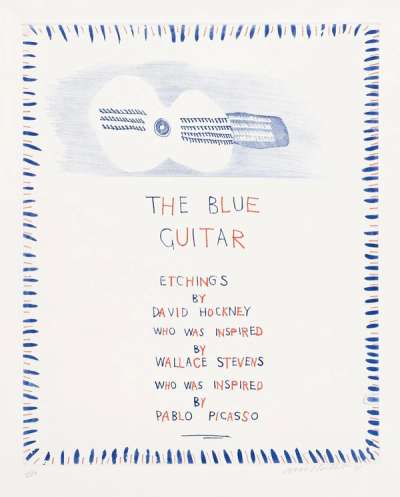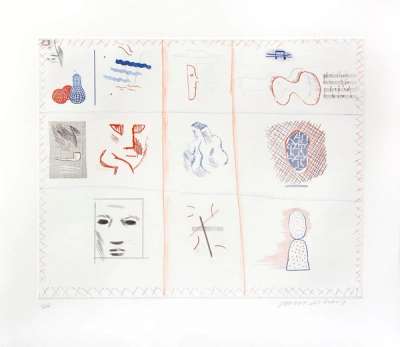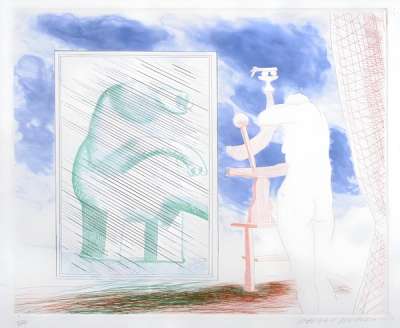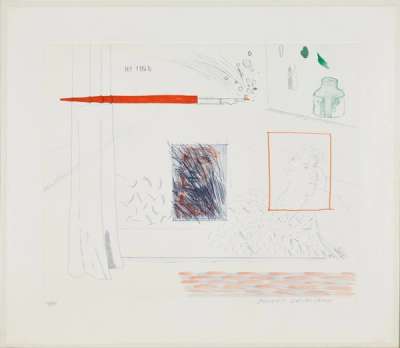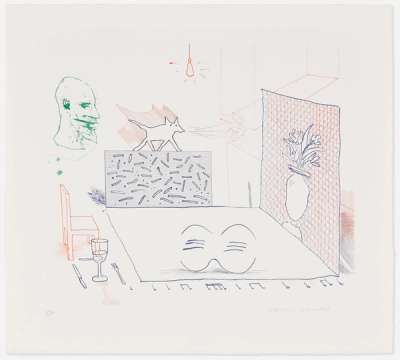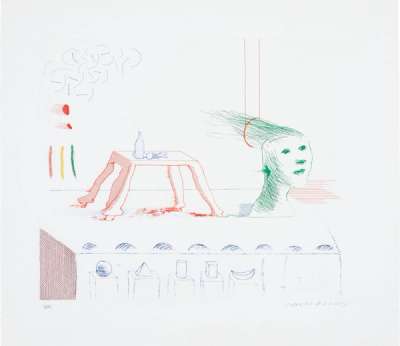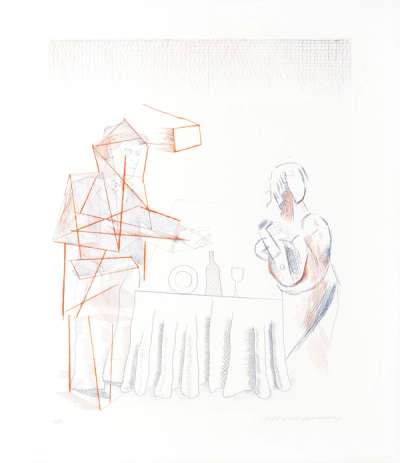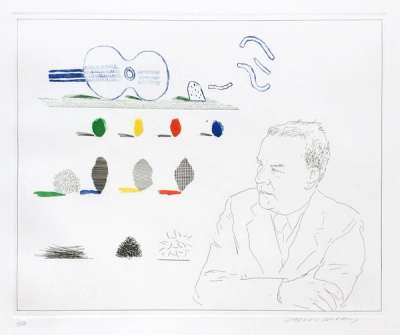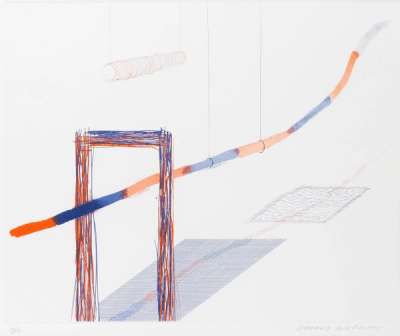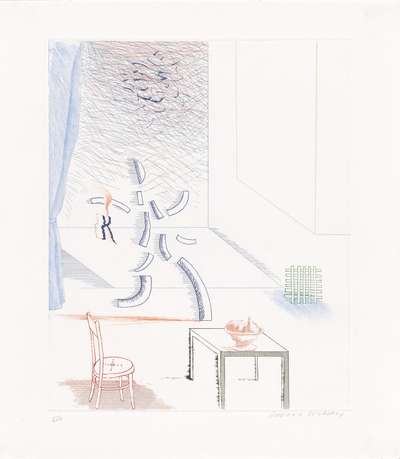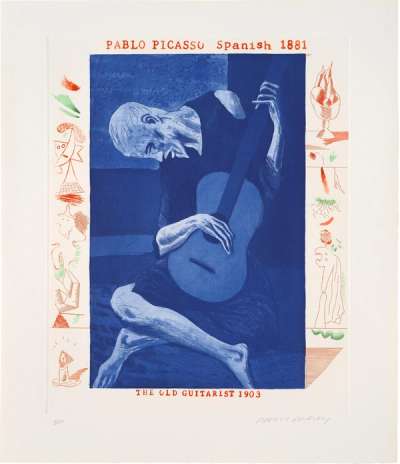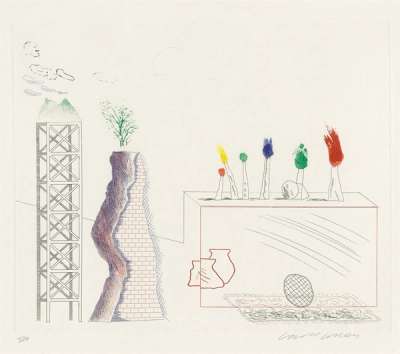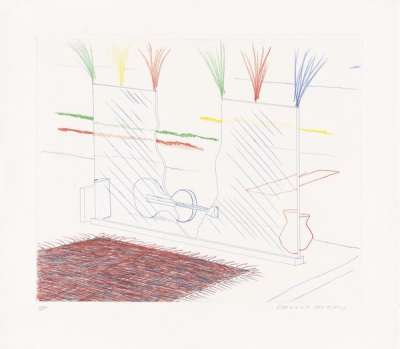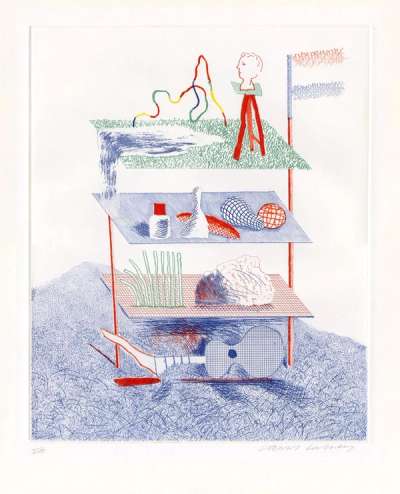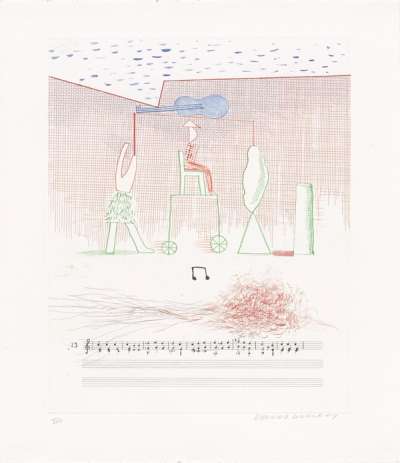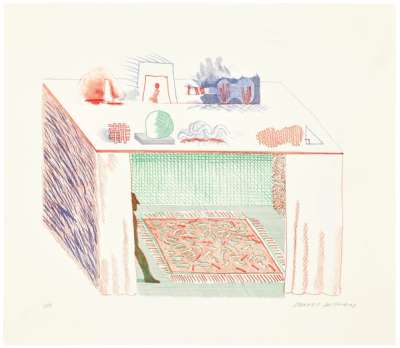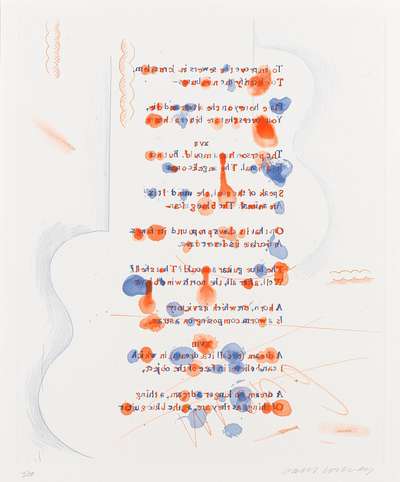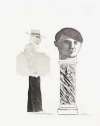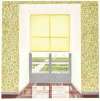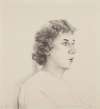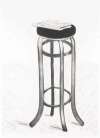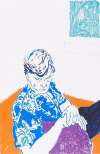The
Blue Guitar
David Hockney’s The Blue Guitar etchings echo narrative threads from Wallace Stevens' 1936 poem, The Man with the Blue Guitar, and the 1903 Picasso painting, The Old Guitarist, which it was inspired by. Drawing thematic rather than narrative threads from the poem, Hockney represents them in a style inspire by Picasso, resulting in a series of uncanny dreamscapes and prints.
David Hockney The Blue Guitar For sale
The Blue Guitar Value (5 Years)
With £120274 in the past 12 months, David Hockney's The Blue Guitar series is one of the most actively traded in the market. Prices have varied significantly – from £380 to £52244 – driven by fluctuations in factors like condition, provenance, and market timing. Over the past 12 months, the average selling price was £5011, with an average annual growth rate of -6.25% across the series.
The Blue Guitar Market value
Auction Results
| Artwork | Auction Date | Auction House | Return to Seller | Hammer Price | Buyer Paid |
|---|---|---|---|---|---|
 The Blue Guitar (complete portfolio) David Hockney Signed Print | 22 Oct 2025 | Sotheby's New York | £14,450 | £17,000 | £24,000 |
 The Poet David Hockney Signed Print | 22 Oct 2025 | Phillips New York | £1,148 | £1,350 | £1,950 |
 Etching Is The Subject David Hockney Signed Print | 22 Oct 2025 | Phillips New York | £1,148 | £1,350 | £1,950 |
 The Old Guitarist David Hockney Signed Print | 22 Oct 2025 | Phillips New York | £2,040 | £2,400 | £3,400 |
 What Is This Picasso David Hockney Signed Print | 22 Oct 2025 | Phillips New York | £5,100 | £6,000 | £8,500 |
 Serenade David Hockney Signed Print | 22 Oct 2025 | Phillips New York | £2,635 | £3,100 | £4,350 |
 Franco-American Mail David Hockney Signed Print | 22 Oct 2025 | Phillips New York | £1,870 | £2,200 | £3,100 |
 Made In April David Hockney Signed Print | 2 Oct 2025 | Mallet Japan | £1,275 | £1,500 | £1,750 |
Sell Your Art
with Us
with Us
Join Our Network of Collectors. Buy, Sell and Track Demand
Meaning & Analysis
Drawing visual inspiration from Picasso, Hockney’s The Blue Guitar etchings are based on Wallace Stevens’ 1936 poem, The Man with the Blue Guitar. It was here that he came across Wallace Stevens’s 1936 poemThe Man with the Blue Guitar which had been inspired by a 1903 painting by Picasso entitled The Old Guitarist. Hockney decided to base a series of works on the poems and described how the “etchings themselves were not conceived as literal illustrations of the poem but as an interpretation of its themes in visual terms. Like the poem, they are about transformations within art as well as the relation between reality and the imagination, so these are pictures and different styles of representation juxtaposed and reflected and dissolved within the same frame”.
Hockney had adored Picasso since he first saw his paintings in a retrospective at the Tate in 1960 which he visited eight times. In 1973, when Picasso died, Hockney was invited to contribute to a series of prints inspired by the painter and he ended up going to Paris to work under the tutelage of Aldo Crommelynck, Picasso's master printer. It was in Crommelynck’s studio that Hockney learned to use the sugar lift aquatint technique which was favoured by Picasso to create coloured etchings such as those in the present series.
As well as adopting Picasso’s printmaking technique for this portfolio, Hockney also tried the Cubist perspective on for size in a move that would inform much of his later work, including series such as Moving Focus and his photo collages. In this way he demonstrates his fluency in the languages of style and printmaking, cherry picking from earlier movements and masters to invent something entirely new. Speaking on this ability, critic Gert Schiff said, “The history of art is a history of appropriations. [Hockney] has been able to adapt his reading of Picasso's art to his own very different representational problems and has thereby created works that are fresh, innovative, and personal.”
